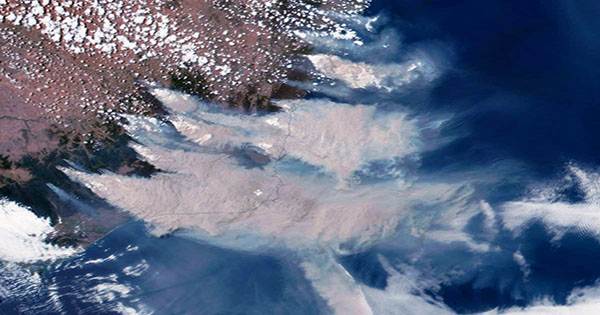Wildfires may wreak havoc on any location, destroying habitats and killing any living thing in their path, but new research has discovered that their smoke has global implications as well. The smoke from the 2019-20 Australian bushfires flew to the skies and traveled thousands of kilometres before landing on the sea, according to the study. Rather of disappearing, it appears to have triggered a phytoplankton bloom the size of Australia. The study, which was published in the journal Nature, attempted to see if the massive fires may be linked to a months-long bloom of phytoplankton in an area of the planet where these microscopic organisms are normally scarce at that time of year.
In a release from Australia’s ARC Centre of Excellence for Climate Extremes, co-author Professor Peter Strutton remarked, “The phytoplankton bloom in this region was unparalleled in the 22-year satellite record and lasted for roughly four months” (CLEC).
“What made it even more remarkable is that the time of year when the bloom appeared is typically when phytoplankton levels are at their lowest, but the smoke from the Australian bushfires completely reversed that.”
Researchers used satellite data and information from autonomous floats put across the region to trace the plumes from the bushfires to see if their movements could explain the unexpected bloom.
The findings suggested that an influx of iron, which had hitched a ride on the smoke, which peaked at altitudes of 16 kilometers before landing in the Southern Ocean, was the most likely culprit.
Because iron is essential for photosynthesis and phytoplankton growth, it’s somewhat unexpected that the smoke deposited three times the quantity normally found in the area (as determined by the researchers), the local phytoplankton took advantage. The boom came on quickly, in some cases only a few days after the fire that created the smoke.
So, what exactly does it all imply? While something that happens on a scale measured in continents can be frightening, a phytoplankton bloom isn’t always a terrible thing. Small organisms perform a massive task for the earth by sequestering carbon through photosynthesis. Iron sprinkling into the ocean has been proposed as a technique of combating climate change.
Researchers discovered in a second report that, while the fires themselves are believed to have produced enough CO2 to exceed Australia’s typical annual emissions by 80%, the subsequent carbon sink ascribed to the phytoplankton bloom could well have matched what was emitted. However, it’s impossible to make clear conclusions without knowing how deep the carbon sank. The available data paints a clear picture of the interconnections between wildfires, ocean ecosystems, and climate change.
















